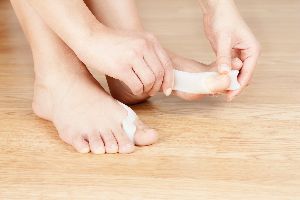
One of the most common ailments that requires attention from a podiatrist is bunions. These bony protrusions appear on the side of the big toe and can be painful, making it difficult to walk or wear shoes. While a doctor can surgically fix them, they cannot prevent this degenerative condition once it begins. To help you better understand how and why this occurs, below are answers to several common questions.
What You Should Know About Bunions
Why do they form?
While many people think bunions are bony growths on the side of a toe, they occur when the toe's bones gradually shift position. Eventually, the bones stick out from the inside of the foot. The condition happens due to the mechanical structure of the toe, which means it may have a genetic connection. It is not caused by wearing any particular type of shoe or other habit, such as exercise.
What makes them painful?
Bunions are painful because the medial dorsal cutaneous nerve runs over the bump and up the leg. Wearing tight-fitting socks or shoes that do not have adequate room in the toe box puts pressure on the bump and irritates the nerve, causing pain. The bigger the bump, the more pain you'll have. This protrusion can also be painful because the big toe supports a lot of weight when you walk and stand, and the bump interferes with proper distribution.
How can I manage pain without surgery?

Wearing comfortable, supportive shoes that do not put pressure on the bunion is the best way to alleviate pain. Additionally, bracing and splinting the protrusion can help relieve pressure. Custom orthotics are another option, as these provide more support beneath your feet. Other non-surgical treatments include attending physical therapy to help realign the bones and taking over-the-counter pain relievers.
What are my treatment options?
Once a bunion begins to form, you cannot stop the progression. If it becomes too painful to wear shoes, a podiatrist can perform surgery to realign the bones. They often install metal plates or screws to hold the bones in place during this process. Recovery can take from four to six weeks, and afterward, you can wear shoes comfortably and return to normal activity.
If you need a podiatrist to assess your bunions, contact St. Peters Foot & Ankle: Samual T. Wood-DPM LLC in Florissant, MO. Since 1997, this practice has been providing diagnostic services, corrective care, and rehabilitation for everything from ingrown toenails to ankle sprains and plantar warts. They serve residents throughout St. Charles and St. Louis Counties. Visit them online for more information about their services, and call (636) 720-0190 to schedule an appointment.
About the Business
Have a question? Ask the experts!
Send your question

